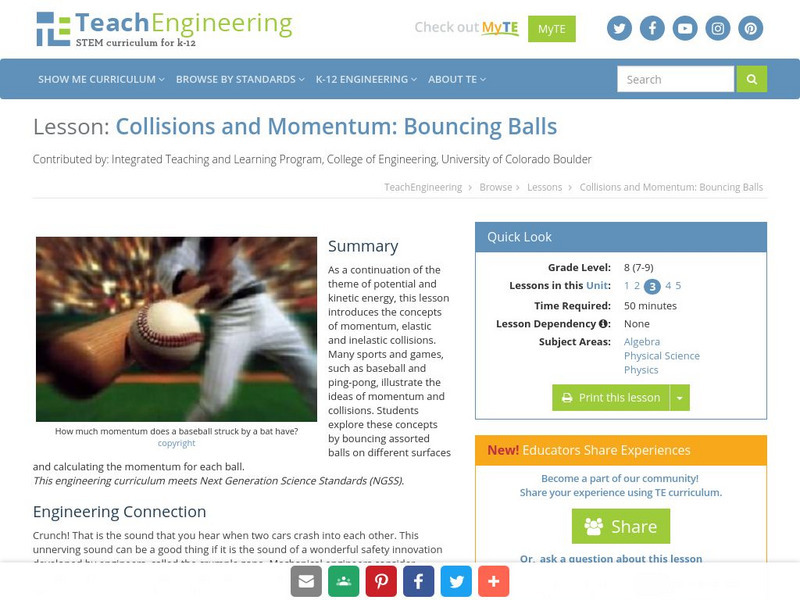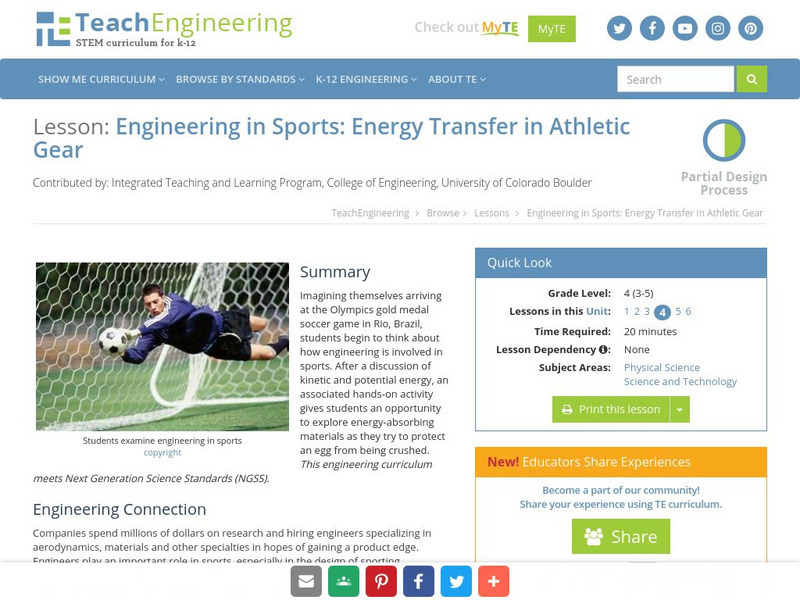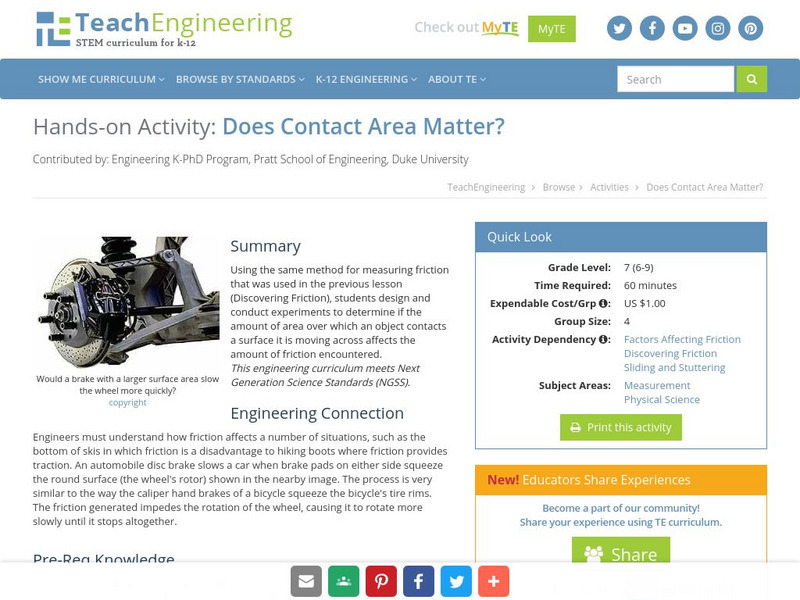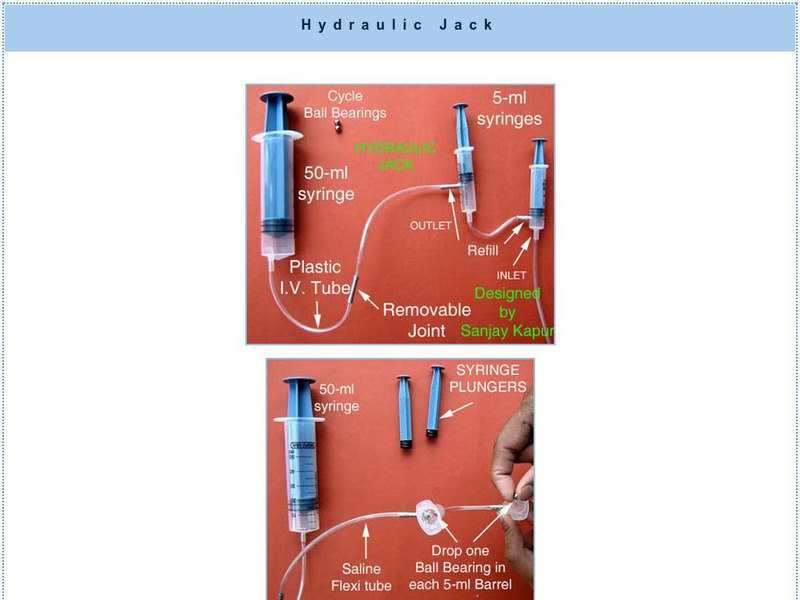TeachEngineering
Teach Engineering: Collisions and Momentum: Bouncing Balls
As a continuation of the theme of potential and kinetic energy, this lesson introduces the concepts of momentum, elastic and inelastic collisions. Many sports and games, such as baseball and ping-pong, illustrate the ideas of momentum...
TeachEngineering
Teach Engineering: Engineering in Sports
Imagining themselves arriving at the Olympic gold medal soccer game in Beijing, students begin to think about how engineering is involved in sports. After a discussion of kinetic and potential energy, an associated hands-on activity...
TeachEngineering
Teach Engineering: Strong as the Weakest Link
To introduce the two types of stress that materials undergo - compression and tension - students examine compressive and tensile forces and learn about bridges and skyscrapers. They construct their own building structure using...
Famous Scientists
Famous Scientists: Frank Hornby
Learn how Frank Hornby managed to excel in toy invention based on engineering principles.
Other
National Physical Laboratory: The History of Length Measurement
This resource provides historic information on length measurement in the United Kingdom. Click on the topics on the left toolbar of the article to find out more information.
TeachEngineering
Teach Engineering: The Search for Secret Agents
Students embark on a scavenger hunt around the school looking for indoor air pollution and mapping source locations.
TED Talks
Ted: Ted Ed: What Is Metallic Glass?
Steel and plastic are essential to much of our infrastructure and technology. Steel is strong and hard, but difficult to shape intricately. Plastic can take on just about any form, but it's weak and soft. Wouldn't it be nice if there...
PBS
Pbs: Nova: Destroy the Castle
Design your own trebuchet catapult, launch the sandstone balls, and destroy the castle. Decide on the size of your projectiles, where to place your trebuchet, and other factors critical to success.
TeachEngineering
Teach Engineering: Does Contact Area Matter?
Using the same method for measuring friction that was used in the previous lesson (Discovering Friction), students design and conduct an experiment to determine if the amount of area over which an object contacts a surface it is moving...
TeachEngineering
Teach Engineering: Build It Better!
Students learn about tornados and how engineers design structures to better withstand them. Students then design and draw a house that will better withstand a tornado. Students also learn about the Fujita Tornado Damage Score.
PBS
Pbs Building Big: The Labs
An interactive series of labs describing some basic principles of Physics. The labs demonstrate different basic concepts of physics used in building and creating large structures such as bridges, domes, skyscrapers, dams, and tunnels.
Other
Arvind Toys: Hydraulic Jack
This image tutorial walks students through the steps of making a hydraulic jack.
TeachEngineering
Teach Engineering: A Tornado in My State?
Students will analyze data of tornadoes throughout the United States. They will create a bar graph of the number of tornadoes for the top ten states in the country and then calculate the median and the mode of the data.
National Academy of Engineering
Engineer Girl
Website designed to bring national attention to the exciting opportunities that engineering represents for girls and women.
ABCya
Ab Cya: Colorush
Colorush is a fun puzzle game for the whole family! Guide the color particle from the container to the capacitor. Different items will get introduced along the way to help you on your puzzle journey!
ABCya
Ab Cya: Cat Around the World
Cat Around the World is a physics-based logic game. The goal is to feed the cat by removing objects and manipulating others while also trying to collect stars. Watch out for unfriendly creatures that want the food for themselves!















